-
 Bitcoin
Bitcoin $106,754.6083
1.33% -
 Ethereum
Ethereum $2,625.8249
3.80% -
 Tether USDt
Tether USDt $1.0001
-0.03% -
 XRP
XRP $2.1891
1.67% -
 BNB
BNB $654.5220
0.66% -
 Solana
Solana $156.9428
7.28% -
 USDC
USDC $0.9998
0.00% -
 Dogecoin
Dogecoin $0.1780
1.14% -
 TRON
TRON $0.2706
-0.16% -
 Cardano
Cardano $0.6470
2.77% -
 Hyperliquid
Hyperliquid $44.6467
10.24% -
 Sui
Sui $3.1128
3.86% -
 Bitcoin Cash
Bitcoin Cash $455.7646
3.00% -
 Chainlink
Chainlink $13.6858
4.08% -
 UNUS SED LEO
UNUS SED LEO $9.2682
0.21% -
 Avalanche
Avalanche $19.7433
3.79% -
 Stellar
Stellar $0.2616
1.64% -
 Toncoin
Toncoin $3.0222
2.19% -
 Shiba Inu
Shiba Inu $0.0...01220
1.49% -
 Hedera
Hedera $0.1580
2.75% -
 Litecoin
Litecoin $87.4964
2.29% -
 Polkadot
Polkadot $3.8958
3.05% -
 Ethena USDe
Ethena USDe $1.0000
-0.04% -
 Monero
Monero $317.2263
0.26% -
 Bitget Token
Bitget Token $4.5985
1.68% -
 Dai
Dai $0.9999
0.00% -
 Pepe
Pepe $0.0...01140
2.44% -
 Uniswap
Uniswap $7.6065
5.29% -
 Pi
Pi $0.6042
-2.00% -
 Aave
Aave $289.6343
6.02%
How to use the volume distribution to identify the main trend of the contract?
Volume distribution in crypto futures reveals key support/resistance zones, helping traders anticipate price moves by highlighting areas of significant buying or selling pressure.
Jun 20, 2025 at 03:56 am
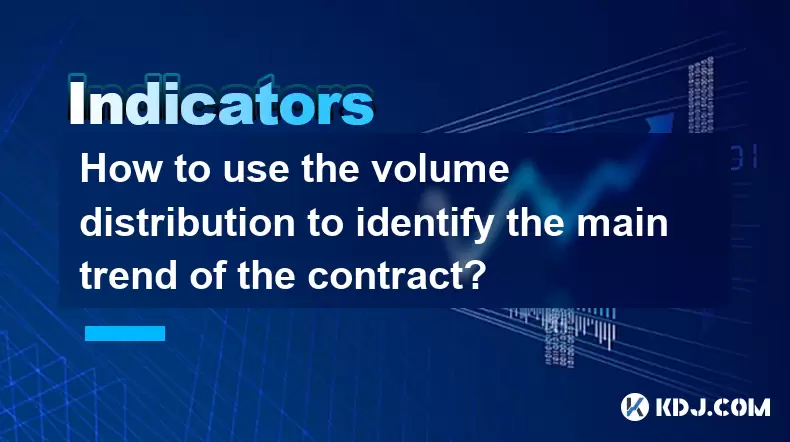
Understanding Volume Distribution in Cryptocurrency Contracts
In the realm of cryptocurrency trading, particularly within futures and perpetual contracts, volume distribution plays a pivotal role in deciphering market sentiment. Unlike spot markets, contract trading involves leveraged positions that can amplify both gains and losses. To navigate this complex environment, traders rely on various analytical tools, one of which is volume distribution.
Volume distribution refers to how trading activity is spread across different price levels over a given period. This data provides insights into where significant buying or selling pressure exists. High volume at specific price points often indicates strong support or resistance zones. By analyzing these patterns, traders can infer potential shifts in market direction, especially when large volumes are concentrated around key price areas.
How Volume Distribution Reflects Market Psychology
The behavior of institutional players and high-net-worth individuals (HNIs) is often reflected in the volume distribution chart. When large orders are executed, they leave behind footprints in the form of spikes in volume at certain price levels. These levels may not always be visible through traditional order books due to liquidity aggregation and hidden orders.
A sudden surge in volume at a particular price level suggests aggressive buying or selling by major players. For instance, if there's a noticeable accumulation of volume above the current market price, it might signal an impending bullish breakout. Conversely, heavy volume below the current price could indicate that sellers are preparing to push prices lower.
This psychological insight allows retail traders to align their strategies with the dominant trend rather than trade against it. However, interpreting volume distribution requires careful observation and correlation with other technical indicators like moving averages and order flow analysis.
Identifying Institutional Activity Through Volume Clusters
One of the most effective ways to utilize volume distribution is to identify volume clusters, which are areas on the chart where a large amount of trading has occurred. These clusters often represent where big players have placed their orders or where stop-losses are likely to be triggered.
To locate these clusters:
- Look for dense regions in the volume profile histogram.
- Identify price zones where volume remains elevated for multiple periods.
- Cross-reference with historical support/resistance levels.
These clustered zones act as magnets for future price action. If the price revisits such a zone after a prolonged move, it can either find support or face resistance depending on the nature of the cluster. Traders can use this information to enter trades with better risk-reward ratios.
It’s important to note that volume clusters should not be viewed in isolation. They must be combined with directional momentum indicators and candlestick patterns to confirm the strength of the prevailing trend.
Spotting Reversals Using Divergence in Volume Profiles
Another advanced application of volume distribution lies in detecting potential reversals through divergence between price and volume. In many cases, the market may continue to make higher highs while the volume at those levels begins to dwindle. This discrepancy can signal weakening participation from buyers.
Divergence occurs when price trends in one direction but volume fails to confirm the movement. For example, if the price is rising but the volume distribution shows declining interest at new highs, it suggests that the uptrend is losing steam. Similarly, falling prices accompanied by diminishing volume at lower levels may indicate that sellers are exhausted.
Traders can set up alerts or manually scan for such divergences by comparing:
- The height of recent price candles
- Corresponding volume levels at those candle ranges
- Historical volume benchmarks
By recognizing these early warning signs, traders can anticipate possible trend exhaustion before it becomes apparent on standard price charts.
Integrating Volume Distribution with Order Flow Analysis
For more advanced users, combining volume distribution with order flow data can yield deeper insights into real-time market dynamics. Order flow reveals the aggressiveness of buyers versus sellers by showing whether trades were initiated at the bid or ask.
When used together:
- High volume at a certain price with mostly ask-initiated trades indicates strong buying pressure.
- Conversely, high volume with bid-initiated trades suggests aggressive selling.
This integration helps distinguish between genuine demand and artificial price manipulation. It also allows traders to assess the likelihood of a breakout based on whether the volume is being driven by informed participants or retail panic.
Platforms offering depth-of-market (DOM) views alongside volume profiles enable traders to visualize both dimensions simultaneously. This dual-layered approach enhances decision-making accuracy, especially during volatile market conditions.
Frequently Asked Questions
Q: Can volume distribution alone determine the main trend?
While volume distribution offers valuable clues about market structure, it should not be used in isolation. Combining it with trendlines, moving averages, and momentum oscillators improves its predictive power significantly.
Q: How do I access volume distribution data on trading platforms?
Most professional-grade platforms like TradingView, Bybit, and Binance Futures provide volume profile tools. Ensure you’re using a version that supports advanced charting features and customize the settings to match your trading timeframe.
Q: Is volume distribution more reliable on higher timeframes?
Yes, volume distribution tends to be more meaningful on higher timeframes such as 4-hour or daily charts. Lower timeframes may show erratic volume spikes that don’t necessarily reflect the broader trend.
Q: How does volume distribution differ between spot and futures markets?
Futures markets often exhibit more pronounced volume clustering due to leverage-based trading and funding rate mechanisms. Spot markets tend to have smoother volume profiles, making it harder to detect sharp turning points.
Disclaimer:info@kdj.com
The information provided is not trading advice. kdj.com does not assume any responsibility for any investments made based on the information provided in this article. Cryptocurrencies are highly volatile and it is highly recommended that you invest with caution after thorough research!
If you believe that the content used on this website infringes your copyright, please contact us immediately (info@kdj.com) and we will delete it promptly.
- Crypto Bull Run Expert Prediction: Navigating the Generational Surge
- 2025-06-20 08:25:12
- Peter Schiff's Stablecoin Stance: Gold vs. Fiat in the Crypto Age
- 2025-06-20 08:25:12
- Wyoming Stable Token (WYST): Sei Network Emerges as a Frontrunner
- 2025-06-20 08:45:12
- Semler Scientific's Bitcoin Bet: From Healthcare Tech to Largest Holder?
- 2025-06-20 08:45:12
- Bitcoin's Balancing Act: Demand, Selling Pressure, and the Road Ahead
- 2025-06-20 08:50:12
- Bitcoin Strategy: Semler Scientific's Bold 105,000 BTC Target and the Corporate Rush
- 2025-06-20 08:37:06
Related knowledge
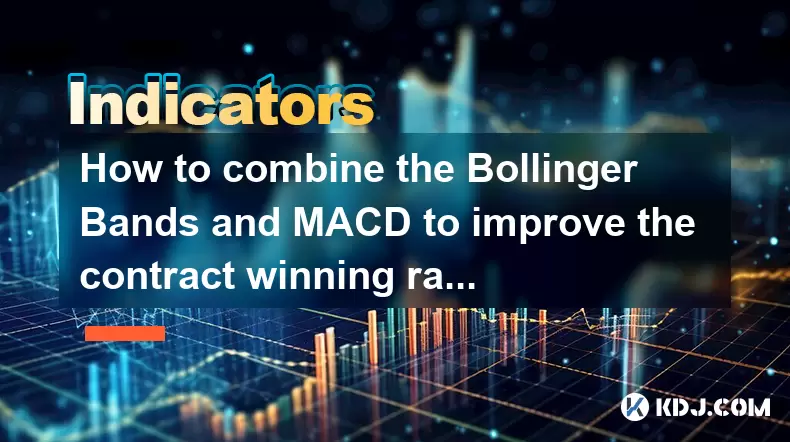
How to combine the Bollinger Bands and MACD to improve the contract winning rate?
Jun 19,2025 at 06:35pm
Understanding Bollinger Bands and MACD IndicatorsTo effectively combine Bollinger Bands and the MACD (Moving Average Convergence Divergence), it's essential to first understand what each indicator represents. Bollinger Bands consist of a middle moving average line and two outer bands that adjust based on market volatility. When prices move toward the up...
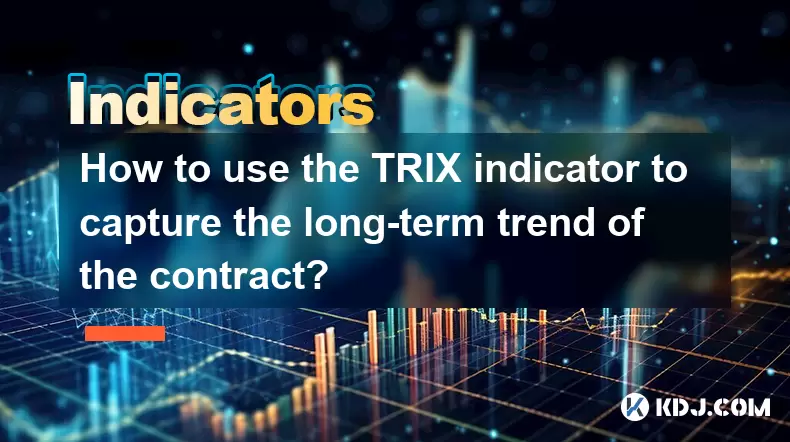
How to use the TRIX indicator to capture the long-term trend of the contract?
Jun 20,2025 at 09:14am
What Is the TRIX Indicator?The TRIX (Triple Exponential Average) indicator is a momentum oscillator used to identify oversold and overbought conditions, as well as potential trend reversals in financial markets. It is calculated by applying a triple exponential moving average to price data and then taking the percentage rate of change of that smoothed v...

How does the long lower shadow of the K line indicate the formation of the bottom of the contract?
Jun 19,2025 at 05:00am
Understanding the Long Lower Shadow in K-Line AnalysisIn cryptocurrency trading, K-line analysis plays a pivotal role in determining market sentiment and potential price reversals. A long lower shadow, also known as a long wick, is one of the most telling candlestick patterns that traders look for when assessing whether a bottom might be forming in a co...

How to use the volume distribution to identify the main trend of the contract?
Jun 20,2025 at 03:56am
Understanding Volume Distribution in Cryptocurrency ContractsIn the realm of cryptocurrency trading, particularly within futures and perpetual contracts, volume distribution plays a pivotal role in deciphering market sentiment. Unlike spot markets, contract trading involves leveraged positions that can amplify both gains and losses. To navigate this com...
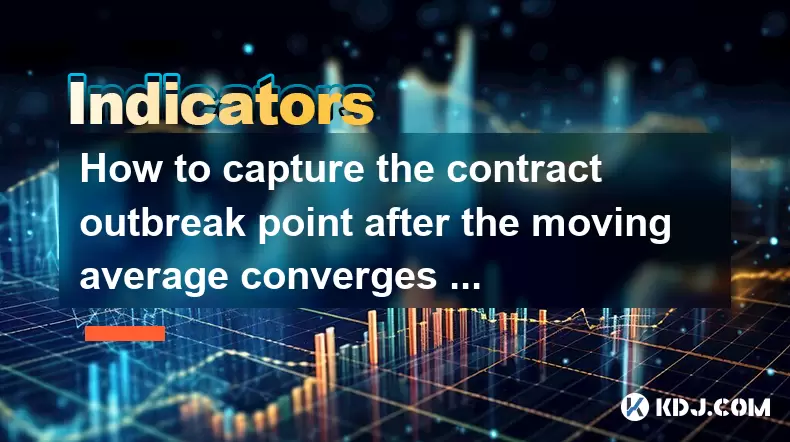
How to capture the contract outbreak point after the moving average converges and diverges?
Jun 19,2025 at 02:07pm
Understanding Moving Average Convergence and Divergence in Crypto TradingIn cryptocurrency trading, moving averages are among the most widely used technical indicators. The concept of convergence and divergence refers to how different moving averages align or separate over time. When short-term and long-term moving averages come together (converge), it ...
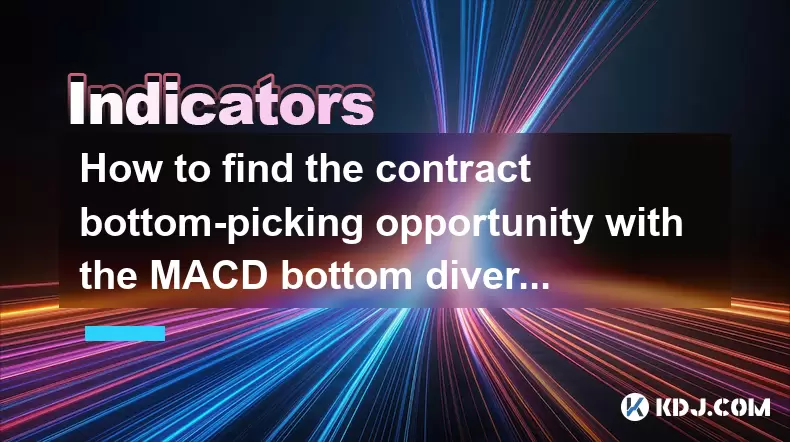
How to find the contract bottom-picking opportunity with the MACD bottom divergence?
Jun 19,2025 at 02:28pm
Understanding MACD Bottom Divergence in Cryptocurrency TradingMACD (Moving Average Convergence Divergence) is a widely used technical analysis tool that helps traders identify potential reversals in price trends. Bottom divergence, specifically, occurs when the price of an asset makes a new low, but the MACD indicator does not confirm this by making a c...

How to combine the Bollinger Bands and MACD to improve the contract winning rate?
Jun 19,2025 at 06:35pm
Understanding Bollinger Bands and MACD IndicatorsTo effectively combine Bollinger Bands and the MACD (Moving Average Convergence Divergence), it's essential to first understand what each indicator represents. Bollinger Bands consist of a middle moving average line and two outer bands that adjust based on market volatility. When prices move toward the up...

How to use the TRIX indicator to capture the long-term trend of the contract?
Jun 20,2025 at 09:14am
What Is the TRIX Indicator?The TRIX (Triple Exponential Average) indicator is a momentum oscillator used to identify oversold and overbought conditions, as well as potential trend reversals in financial markets. It is calculated by applying a triple exponential moving average to price data and then taking the percentage rate of change of that smoothed v...

How does the long lower shadow of the K line indicate the formation of the bottom of the contract?
Jun 19,2025 at 05:00am
Understanding the Long Lower Shadow in K-Line AnalysisIn cryptocurrency trading, K-line analysis plays a pivotal role in determining market sentiment and potential price reversals. A long lower shadow, also known as a long wick, is one of the most telling candlestick patterns that traders look for when assessing whether a bottom might be forming in a co...

How to use the volume distribution to identify the main trend of the contract?
Jun 20,2025 at 03:56am
Understanding Volume Distribution in Cryptocurrency ContractsIn the realm of cryptocurrency trading, particularly within futures and perpetual contracts, volume distribution plays a pivotal role in deciphering market sentiment. Unlike spot markets, contract trading involves leveraged positions that can amplify both gains and losses. To navigate this com...

How to capture the contract outbreak point after the moving average converges and diverges?
Jun 19,2025 at 02:07pm
Understanding Moving Average Convergence and Divergence in Crypto TradingIn cryptocurrency trading, moving averages are among the most widely used technical indicators. The concept of convergence and divergence refers to how different moving averages align or separate over time. When short-term and long-term moving averages come together (converge), it ...

How to find the contract bottom-picking opportunity with the MACD bottom divergence?
Jun 19,2025 at 02:28pm
Understanding MACD Bottom Divergence in Cryptocurrency TradingMACD (Moving Average Convergence Divergence) is a widely used technical analysis tool that helps traders identify potential reversals in price trends. Bottom divergence, specifically, occurs when the price of an asset makes a new low, but the MACD indicator does not confirm this by making a c...
See all articles

























































































